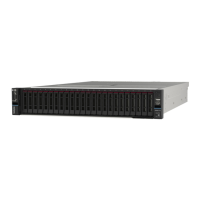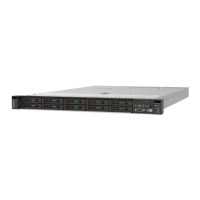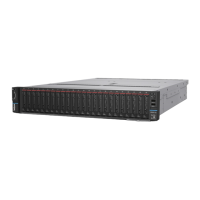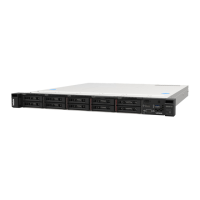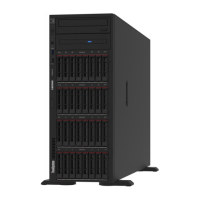Rear PCIe adapter and riser assembly replacement
Follow instructions in this section to remove and install a rear riser assembly and PCIe adapter. The PCIe
adapter can be an Ethernet card, a host bus adapter, a RAID adapter, an add-in PCIe SSD adapter, or any
other supported PCIe adapters. PCIe adapters vary by type, but the installation and removal procedures are
the same.
•
“Remove a rear riser assembly” on page 232
• “Remove a rear PCIe adapter” on page 236
• “Install a rear PCIe adapter” on page 239
• “Install a rear riser assembly” on page 242
Riser cages vary by server configurations.
Notes:
• The server supports one 7mm drive cage on the location of riser 1 cage or riser 2 cage. For 7mm drive
cage installation rules, see
“PCIe slots and PCIe adapters” on page 54. To replace a 7mm drive cage, see
“Rear 7mm drive backplane and drive cage replacement” on page 205.
• The riser card shown in each riser cage is an example for illustration. Some riser cages support different
types of riser cards. For details, see
“PCIe slots and PCIe adapters” on page 54.
• The riser 5 cage is located on the front of the server. For replacement of the riser 5 cage, see
Front
adapter cage replacement
.
Table 26. Riser cages
Server
configuration
Riser 1 cage Riser 2 cage Riser 3 cage or 4LP
riser 3/4 cage
Riser 5 cage
Configuration with 8
PCIe slots
• 3-slot riser cage
• 3-slot riser cage
Riser 3 cage
• Gen 4
• Gen 5
N/A
Configuration with 10
PCIe slots
• 3-slot riser cage
• 3-slot riser cage
• 4LP riser 3/4 cage
LP: low profile
N/A
Chapter 5. Hardware replacement procedures 231

